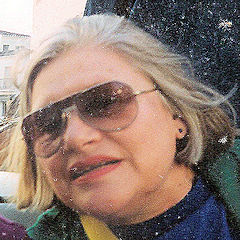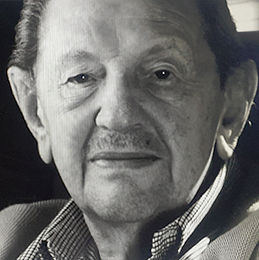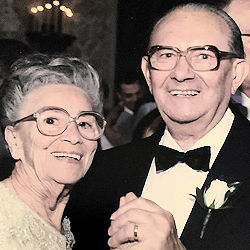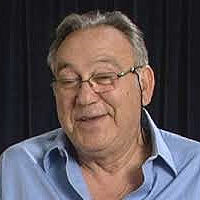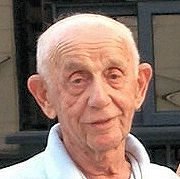Collecting the Memories
- for us and for future generations

Over many years, many Holocaust survivors have documented their memories in different languages and in different methods – through printed, limited-edition memoirs, in video documentaries, in written, photographic and/or video testimonies for Yad Vashem, the USC Shoah Foundation, the POLIN Museum of the History of Polish Jews, in local Holocaust museums and more.
For us and for future generations, these memories and testimonies are of the greatest historical importance, as they represent survivors and witnesses telling us their own stories of what occurred in Częstochowa before, during and after the Holocaust. They also tell of these survivors’ post-War fates – whether they immigrated to Israel, to elsewhere in the world or whether they remained in Poland
As these survivors and witnesses sadly leave us, by preserving their stories, we will enable them to continue to speak to us “from beyond the grave”.
We launched this project – “Collecting the Memories“ – so that, under the “one roof” of our website, we can endeavour to centralise all those personal stories – published, through whatever media and in whatever language – so that they may be preserved for posterity.
SIMPLY CLICK ON EACH NAME TO VIEW THE COLLECTION OF MEMORIES
This film, from the Fortunoff Video Archives for Holocaust Testimonies, features seven survivors from Częstochowa, who describe their lives before the War – the German invasion, the ghettos, the mass killings, the deportations, the slave-labour in German factories which were established in Częstochowa, their liberation by Soviet troops and their subsequent fates.
It was produced in 2004, for the First Reunion of the World Society of Częstochowa Jews & Their Descendants, by Joanne Rudof and edited by Michael O’Keefe.
Click HERE to view the video.
 JULIA BABIACKI was born in Częstochowa in 1924.
JULIA BABIACKI was born in Częstochowa in 1924.
In a video testimony, Julia talks about her childhood in Częstochowa, manifestations of antisemitism including a boycott of Jewish businesses, moving to Lublin at the outbreak of War, the German occupation, decrees against Jews, studying in secret and deportation to the ghetto in April 1941, Life in the ghetto included the major deportation in September 1942, the transfer to work at HASAG and in the fields and continued living in the ghetto in January 1943.
Częstochowa was liberated by the Red Army in January 1945, after which she wandered around Europe. She attempted to emigrate to Israel, but was deported to Cyprus. She finally settled in Israel in 1948.
Click HERE to view the Julia’s testimony.
HALINA BARKANI nee SZMULEWICZ was born in Częstochowa in June 1926.
In 1998, she published “Memories of Częstochowa”, the story of her life in Częstochhowa and of her survival from the Holocaust.
Click HERE to read her story in HEBREW.
 Hanka Batista-Rozyn was born in Czestochowa in August 1937
Hanka Batista-Rozyn was born in Czestochowa in August 1937
As a five-year-old, her mother left her on a bridge in central Częstochowa, with instructions to go a specific woman.
This is the story of Hanka’s survival and of Henryk and Gertruda Zielonka, the couple who, in June 1943, took in Hanka, thereby saving her life.
On 12th April 1993, the Zielinka couple were honoured, by Yad Vashem, with the title of “Righteous Among the Nations”.
Click HERE to read Hank’s story in HEBREW.
Click HERE to read Hank’s story in POLISH.
Click HERE to read the story of how the Zielonka couple saved Hanka (in ENGLISH).
Click HERE to watch Hanka tell her story (in HEBREW with ENGLISH sub-titles).
Dov Ben Ya’akov (Bolek) was born in Częstochowa in 1914.
In this document, he writes, in great detail, about the Częstochowa ghetto and states, “We asked ourselves again and again, during the time in our ghetto and after the War, how did it happen that, despite the information we received, the beginning of the revolts came so late?”
Click HERE to read the original HEBREW text
(courtesy Moreshet, Mordechai Anielewicz Memorial).
Click HERE to read the ENGLISH translation.
Menachem Besserglik dated his original Yiddish-language manuscript 20th December 1945.
As such, his writing about the German occupation of Częstochowa were derived from very recent experiences and memories.
If anyone knows of an English language translation, please advise our Webmaster.
Click HERE to read the original YIDDISH document.
Click HERE to read the HEBREW translation.
Pinchas Birencwajg was born in Częstochowa on 24th April 1904.
During the Holocaust, he was in Częstochowa – in the Móebel Lager, the ghetto and in the HASAG forced labour camp. He survived using Aryan papers.
In 1951, he spoke at a memorial in Montreal.
Click HERE to read his wartime story.
 ISAAC BIRKENSZTADT was born in Częstochowa in March 1923.
ISAAC BIRKENSZTADT was born in Częstochowa in March 1923.
In a very, comprehensive manner, Isaac tells the story of his family, his wartime experiences and his fate after the War, including proudly presenting his own descendants.
Click HERE to read the original document in HEBREW.
Click HERE to watch Isaac’s video interview with Yad Vashem.

BERL BLAUWEISS was born in Częstochowa in 1926.
In a collection of ten notebooks, he wrote, in Yiddish, his memoirs about the Częstochowa ghetto.
An attempt was made to translate them in Hebrew, however this was only partially successful due to the text being difficult to decipher.
Click HERE to view the notebook manuscripts.
 Dorka Bram-Sternberg was born in Czestochowa in 1926.
Dorka Bram-Sternberg was born in Czestochowa in 1926.
Two notes were buried, in the ground in a bottle, beside the graves of twenty-five Jews who were murdered, on 4th January 1943, in the Second Aktion in the Small Ghetto in Czestochowa. The notes were discovered during the exhumation and transfer of the victims to a permanent grave following liberation. Included here is a brief testimony from Dorka Bram-Sternberg, who witnessed the murder of the twenty-five Jews.
Click HERE to view the images.
After the War, in Hebrew, she wrote detailed memoirs about her experiences in Częstochowa from the outbreak of the War, on 1st Deptember 1939, until 23rd March 1950.
Click HERE to read the document.
In March 2020, the Ghetto Fighter’s House produced a video about Dorka’s life.
Click HERE to watch this documentary video.
Abraham Bomba was born in Bytom on 9th June 1913. In the following years, his family moved to Częstochowa, where he began working as a hairdresser. On 25th September 1942, he and his family were transported to the Treblinka II extermination camp. In January 1943, along with two other prisoners, he escaped from Treblinka and managed to return to Częstochowa, to the “Small Ghetto”. He survived the war in HASAG-Pelcery.
In 1996, he gave a video testimony to the USC Shoah Foundation.
Click HERE to view the video.
Click HERE to read his story in the Treblinka Museum.
DAVID BRAUNER is a Holocaust survivor from Częstochowa.
In 1999, he gave a video testimony to Yad Vashem about his memories of life in the Częstochowa Ghetto.
Click HERE to view that Yad Vashem testimony.
In 2013, he gave another video testimony to Yad Vashem, this time about his life and about how he survived the Holocaust.
Click HERE to view Part 1 of that Yad Vashem testimony.
Click HERE to view Part 2 of that Yad Vashem testimony.
 Originally written in Yiddish, this work, by Liber Brener, Viderstand un Umkum in Czenstochower Ghetto [“Resurrection and Destruction in the Częstochowa Ghetto”], is an expansion and reworking of a diary which the author continued for a long time while in the ghetto and in the camp.
Originally written in Yiddish, this work, by Liber Brener, Viderstand un Umkum in Czenstochower Ghetto [“Resurrection and Destruction in the Częstochowa Ghetto”], is an expansion and reworking of a diary which the author continued for a long time while in the ghetto and in the camp.
Following liberation, he restored his memoirs, verifying and completing them through a series of German, Polish and Yiddish documents, as well as testimonies from other Jewish survivors of the Częstochowa ghetto.
Click HERE to read the HEBREW translation.
Click HERE to read the ENGLISH translation.
(Note: As the English translation is not one carried out through our own Yizkor Book Project,
we do not guarantee its accuracy or completeness.)
Miriam (Marishka) Chen was born in 1931. When she was eighteen months old, following the death of her father, with her mother Hela née Altman (born in Częstochowa), she went to live in Częstochowa.
In a testimony she gave, in Hebrew, to Yad Vashem, she tells of her childhood in Częstochowa and of her experiences during the Holocaust – in the Ghetto and in the HASAG slave labour camp.
Click HERE to read a transcript of Miriam’s testimony in HEBREW.
Click HERE to read a transcript of Miriam’s testimony in ENGLISH.
This document is a translation into French and is entitled “An Episode in the Częstochowa Ghetto”.
It centres around the liquidation of the ghetto, which commenced on 22nd September 1942.
Click HERE to read the document.
Holocaust Survivor Rachela Flug was born in Częstochowa in 1924 – she is the sister of David Brauner, whose testimony also appears on this page.
The video of an interview with her has been provided by Alan Silberstein. He writes:
In 2005, when the “Jews of Czestochowa” exhibition opened at the Polish Consulate in New York City, a small, trim woman approached me and asked if I was related to Leon Silberstein. “Yes”, I told her, “he was my father”. She said that she had served under him in the underground. She said that she was only a soldier – a messenger, in fact – and my father was much more senior. There was so much I wanted to know. A week or so later, my son Eric and I met with her in her apartment in Queens, NYC, with a video camera. We spent about an hour and a half speaking about her experiences during the War. She was very gracious, but asked me not to release the video to anyone while she was alive.
Sadly, Rachela Flug passed away, in New York, in 2017.
Click HERE to watch the interview with this amazing lady.
 DAVID and SIMA FORBERG met in 1944 in HASAG-Pelcery, the slave labour camp in Częstochowa.
DAVID and SIMA FORBERG met in 1944 in HASAG-Pelcery, the slave labour camp in Częstochowa.
Despite the incredible odds which they faced, they not only survived the camp, but survived over 60 years of marriage.
In 2010, an award-winning video documentary was made of their story. Click HERE to read what motivated the filmmaker, Frank Lozano, to make this documentary about the Forberg couple.
Click HERE to view their story.
CHAIM FREITAG was born in Częstochowa in 1920.
In 1997, Chaim returned to Częstochowa. His visit was filmed. During the journey back to his roots, Chaim talks about life in the Częstochowa ghetto, the liquidation of the ghetto and of the murder of his parents and his two sisters.
Click HERE to view the video.

We know little about W. GLIKSMAN.
In the text, written in Hebrew and French, he writes about the Częstochowa ghetto in the years 1942-1943 – which includes its liquidation.
If anyone knows more about this writer, please email the Webmaster.
Click HERE to view the document.
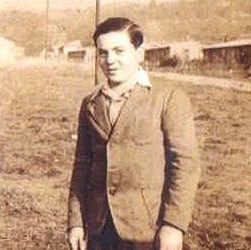 JAKOB GLIKSON was born in Częstochowa in 1927.
JAKOB GLIKSON was born in Częstochowa in 1927.
In 1946, in a notebook, Jakob wrote his memories of the transition from the beautiful city of Częstochowa to life in a ghetto. He also describes his journey to Buchenwald, as well as his arrival at and liberation from Theresienstadt. After completing the writing of his testimony, the notebook remained closed and was not opened again until after Jakob’s death in 1986. Using excerpts from that notebook, his daughter Judy Glikson Pasternak has written her father’s story.
Click HERE to read Jakob’s story in HEBREW.
Click HERE to read, in ENGLISH, why his daughter Judy wrote her father’s story.
 SEWEK GRUNDMAN was born in Częstochowa on 31st August 1924, the maternal grandson of Rabbi Nachum Asz, Chief Rabbi of Częstochowa. Sewek passed away in Roanne, France, on 14th August 2011. He survived the Holocaust, having not been selected to go to Treblinka. From November 1942 until liberation in January 1945, he worked as a painter in the HASAG-Pelcery forced labour camp.
SEWEK GRUNDMAN was born in Częstochowa on 31st August 1924, the maternal grandson of Rabbi Nachum Asz, Chief Rabbi of Częstochowa. Sewek passed away in Roanne, France, on 14th August 2011. He survived the Holocaust, having not been selected to go to Treblinka. From November 1942 until liberation in January 1945, he worked as a painter in the HASAG-Pelcery forced labour camp.
Click HERE to read his autobiography in FRENCH.
In 2006, at Montreal’s McGill University, Sewek told his story and that of his family
in a FRENCH-language video.
Click HERE to view the video.
 RUBIN HERSZLIKOWICZ (HERSCH) was born in Częstochowa in 1921. ROSE (nee GORSET) was born in Częstochowa in 1922.
RUBIN HERSZLIKOWICZ (HERSCH) was born in Częstochowa in 1921. ROSE (nee GORSET) was born in Częstochowa in 1922.
They survived the Częstochowa ghetto, HASAG-Pelcery and a post-War Displaced Persons Camp.
In 2006, their grandsons, Jeffrey and Joshua Hersch, produced a video testimony by their grandparents in order to fulfill a mitzvah project prior to Joshua’s Bar-Mitzvah. At the time when they produced the video, Jeffrey was 16 years old and Joshua was 13 years old. So, considering this, the video, entitled “We Must Never Forget”, is exceptional!
Prior to this, Rubin and Rose had never shared their stories with anyone. They were scheduled to be interviewed for Spielberg’s Shoah archive, but they backed out at the last minute.
In this video, they talk about their lives in Częstochowa, before and during the Holocaust, and also about their post-War fate.
Click HERE to view the video in English.
Several years ago, after a “Birthright” visit to Israel, their grandson Jeffrey Hersch, decided to travel to Poland. During that trip. he visited Częstchowa. He decided to share that experience with the World Society, as part of our “My Częstochowa” project.
Click HERE to read, in English, the impression this visit made upon him.
In 1945, the author writes a lengthy, Yiddish-language document about the establishment and activities of the Jewish underground in the Częstochowa ghetto.
If anyone know more about the author, please contact the Webmaster.
Click HERE to read the document.
GABRIEL HOROWITZ was born in Częstochowa in September 1934.
Having escaped from the Częstochowa ghetto, he and his family were rescued by Wacław and Helena Miłowski, both of whom were later honoured with the title of “Righteous Among the Nations”.
Click HERE to read Gabriel’s story in ENGLISH.
Click HERE to read Gabriel’s story in HEBREW.
Click HERE to read Gabriel’s story in POLISH.
 HERSZ JEDLINSKI was born in Częstochowa on 17th December 1918.
HERSZ JEDLINSKI was born in Częstochowa on 17th December 1918.
He survived the Częstochowa ghetto and the HASAG-Pelcery slave labour-camp, while his entire family was deported to Treblinka.
Finding himself alone, he left for France, where he found his two sisters who had settled there before the War.
His daughter and son-in-law, ELIANE and CLAUDE UNGAR, have carried out extremely in-depth research into Hersz Jedlinski and his Częstochowa family. The extent of their research is amazing and the presentation of the results of this research is not only informative, but exceptionally beautiful.
Click HERE to read, in FRENCH, the story of Hersz Jedlinski and his family.

DEVORA KANTAROWICZ was born in Łódż in December 1926.
When the War broke out, her family moved to Częstochowa to join relatives there.
Devora iss a survivor of the Częstochowa ghetto and the HASAG-Pelcery slave-labour camp.
In August 2000, she gave a video testimony to the Yad Vashem Institute, in which she talks about her childhood in Poland and her surviving the Holocaust.
Click HERE to view that testimony in Hebrew.
 Franka Kenet was born in Czestochowa in 1921, the daughter of Fiszel Kozłowski and Haja Cina (nee Rapaport).
Franka Kenet was born in Czestochowa in 1921, the daughter of Fiszel Kozłowski and Haja Cina (nee Rapaport).
She survived the Częstochowa ghetto and the HASAG forced labour camp.
In September 1946, in Kibbutz Beit Zera, Franka married Shlomko, a survivor from the Vilna ghetto. He was a partisan who, later, became one of the “European Avengers” group.
In their book, “We Are Together”, Shlomko and Franka tell about what happened to them in the ghettos and about their journey to the Land of Israel.
Click HERE to read their story.
 JUREK KIRSZENBAUM was born in Częstochowa in 1929,
JUREK KIRSZENBAUM was born in Częstochowa in 1929,
His story, as told by his wife Marta, tells of his family, his experiences in the ghetto and his incredible survival in HASAG-Pelcery. It also tells of how he gave evidence in a German trial, as an eye-witness, against one of the most brutal German officers in that slave-labour camp.
Click HERE to read his story in HEBREW.
Click HERE to read his story in ENGLISH.
MEMORIES OF HASAG-WARTA IN CZĘSTOCHOWA
Victor (Yeshayahu David) Klapholz was born in Kraków in 1925.
At the end of 1942, together with another group of Jews, including his brother, Haim Hanoch (Heniek), he was transferred from the Płaszow camp to forced labor at the HASAG-Warta munitions factory in Częstochowa. Victor and his late brother Haim Hanoch survived the Holocaust.
The following are Victor’s memories of his time in the HASAG-Warta slave labour camp. They are extracted from Victor’s testimony, given in Hebrew, to the Yad Vashem Institute.
Click HERE to read his testimony in ENGLISH
Click HERE to read his testimony in HEBREW

What struck this descendant of Holocaust Survivors was how many times the Survivors used the word “lucky” when talking of their experiences. They would say that surviving the War was not about being smart, but about having a bisele mazel ‐ a bit of luck. It seems that these families had a LOT of luck
Click HERE to read the story of these families in ENGLISH.
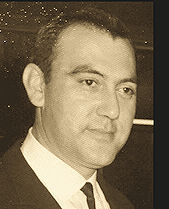
Haim Kurland was born in Częstochowa in 1935.
In his 2006, he gave a video testimony to the Yad Vashem Institute.
In it, Haim talks about his childhood in Częstochowa, life in the “Big Ghetto”, how during the liquidation of the “Big Ghetto”, he hid in the Möbellager and life in the “Small Ghetto”.
Haim also describes his father’s work in the HASAG ammunition recycling factory, his father’s deportation to Buchenwald in 1945, liberation by the British Army in April 1945 and immigration to Israel in 1947.
Sadly, Haim Kurland passed away in Israel in 2016.
Click HERE to view his interview.

LEW KUSZNIR was born in Częstochowa in August 1911. As a talented painter, in his youth, he served as assistant to Professor Perec Willenberg, when he painted the ceiling of the Old Synagogue on ul. Mirowska. Before the War, he also worked as a photographer in Częstochowa.
Lew Kusznir survived the Holocaust in the Częstochowa ghetto and in HASAG. Thanks to his many photographs, we are able to see Jewish life in Częstochowa immediately after the War. His collection of photographs can be found in the archives of Yad Vashem, the Ghetto Fighters House and, thanks to the approval of his daughter Dr. Barbara Refaeli, they can also be found on display in the Czestochowa Jewish Museum.
In 1995, Lew Kusznir recorded a testimony for Yad Vashem in which he talks about Czestochowa, the ghetto and HASAG during the German occupation until the liberation by the Russians. He describes his employment, by the Germans, in painting, photography and graphics while, at the same time, he forged documents for Jews and the underground. He emigrated to o Israel in 1950.
Click HERE to read Lew Kusznir’s Yad Vashem testimony in HEBREW.
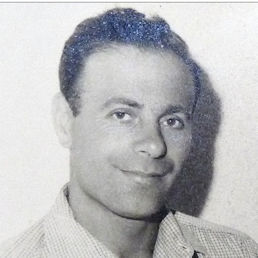 MICHAŁ LAJZEROWICZ was born in Częstochowa in 1927.
MICHAŁ LAJZEROWICZ was born in Częstochowa in 1927.
In a Hebrew-language video testimony given to Yad Vashem in January 1992, Michał talks about his family, life in Częstochowa before the War, life in the ghetto during the War, his arrival in the Treblink death camp, his escape from Treblinka, his return to Częstochowa and his immigration to Israel in 1946.
Click HERE to view Michał Lajzerwicz’s Yad Vashem testimony (in Hebrew).
Click HERE to read Michał Lajzerwicz’s Yad Vashem testimony transcription (in English).

Miriam was born in 1929 to a wealthy Częstochowa family, who owned a celluloid products factory for celluloid products. In her youth, she attended a private Jewish school and, after the outbreak of thee war, she lived in the “Big Ghetto”, together with her family. In the roundup of September 1942, her parents were deported to their deaths to Treblinka, while Miriam was left in the ghetto alone with her sister.
Initially, she worked clearing out the vacated ghetto buildings and then, as a forced laborer, in the HASAG Pelcery camp munitions factory in Częstochowa. There, as a shift worker, she painted the casings of recycled shells. She remained in HASAG until being liberated by the Red Army in January 1945.
To try to begin a new life, with a group of friends, she moved from Częstochowa to Warsaw. From there, she proceeded to Germany and to Czechoslovakia. For a time, she was in a displaced persons camp, where she learned Hebrew. In the summer of 1946, she tried to make aliyah to Israel, but her ship was captured and diverted, by the British, to Cyprus.
At the end of 1946, she managed to arrive in Eretz Israel, as part of Aliyah Bet. She settled in Kibbutz Dan. Later, she was one of the founders of Kibbutz Megiddo.
Click HERE to view Marysia’s extensive interview with Yad Vashem.
Efroim Majerowicz was born in Łódż in 1914, from where he arrived in Częstochowa on 14th Deccmber 1939.
His memoirs, written in Polish and translated into Hebrew, feature life in the ghettoes of Częstochowa and Hrubieszów. They cover the period from the beginning of the War until his escape from a camp.
Click HERE to read his memoirs.
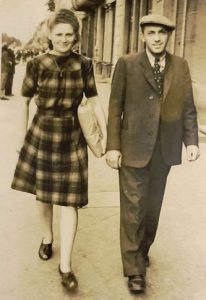 ZVI MOTLYŃSKI was born in 1910, BELLA (nee HECHT) in 1920.
ZVI MOTLYŃSKI was born in 1910, BELLA (nee HECHT) in 1920.
In her memoirs, Bella Motolyński recounts her time at the HASAG-Pelcery slave-labour camp in Częstochowa, where she ended up following the liquidation of the “Small Ghetto” in June 1943.
HASAG-Pelcery comprised several departments and factories, one of which was the Rekalibrirung, where Bella and around seven hundred other labourers worked from 7am until 7pm. The Department cleaned the ammunition pods of anti-aircraft guns. These pods were placed into boiling water from a boiler and, while they were still hot, the labourers extracted them, by hand, and arranged them into crates. Needless to say, they suffered constantly from burns. Their living conditions were very poor. In the morning, they received a slice of bread and “black coffee”, at noon a slice of bread and a little “soup” and, in the evening, nothing.
On 15th January 1945, when the Germans heard that the Russians were approaching. They fled so quickly, in the middle of a meal, that they left behind plates of food on tables. In the evening, when it was certain that the Germans had left, the forced laborers entered the warehouses and the German staff houses and took everything they could – weapons, kitchenware, clothes, etc.
Bella took a soup bowl of soup bearing the HASAG logo. She kept it for many years and, in 2002, she donated it to Yad Vashem.


Click HERE to read Zvi Motlyński’s story in Hebrew.
Click HERE to read Bella Motlyński’s story in Hebrew.
It appears that, when the War broke out, JAKOB PYTEL was a bookkeeper/accountant in Częstochowa.
This document, written in Polish, concerns Częstochowa’s Jews under Nazi occupation in 1942.
According to notations, this document was written into evidence at the Nuremberg trials.
Click HERE to read the document.
Mordechai Rajzman was born in Częstochowa in 1921. In his video testimony, he talks about his childhood in Częstochowa, the occupation of the city by the Germans, the ghetto, the deportations to Treblinka, surviving in the HASAG labour and about his journey to Israel.
Sadly, Mordechai Rajzman passed in late 2023.
Click HERE to view his interview.
Maryla Rotfeld was born in Łódż, but was still an infant when her family moved to Częstochowa. During the German occupation, together with her parents and sister, she found herself in the HASAG Pelcery forced labour camp.
Living in Haifa, 93-year-old Holocaust Survivor Maryla is interviewed by Marcin Bocian and Kamil Langier. In the interview, Maryla recalls her wartime experiences in Częstochowa in great detail.
Click HERE to view her interview.
 MIRIAM ROTSCHILD (nee Robin) was born in Częstochowa on 9th March 1942. As 10-month-old baby, her father arranged for her to be transferred from the Częstochowa ghetto to a Polish family, who handed her over to nuns, overseen by priest Father Bolesław Wróblewski, who hid her in a children’s home, thereby saving her life.
MIRIAM ROTSCHILD (nee Robin) was born in Częstochowa on 9th March 1942. As 10-month-old baby, her father arranged for her to be transferred from the Częstochowa ghetto to a Polish family, who handed her over to nuns, overseen by priest Father Bolesław Wróblewski, who hid her in a children’s home, thereby saving her life.
About a month before the liberation of Częstochowa by the Russians, the little girl was given a new identity, “Jolanta Maria Dobusz” and she adopted by a family, who lived in the town of Elbląg, near Gdańsk. In order to obscure the identity of the adoptive family, incorrect information was intentionally entered in the adoption documents in order to make them difficult to trace
Miriam’s mother perished in the Holocaust and, a month after the adoption, immediately upon his release from the Częstochowa HASAG forced labor camp on 17th January 1945, Miriam’s father, Mojsze Aleksander Rubin, came to the children’s home and was informed that she had been given up for adoption.
In 2024, for his activities during the Holocaust, the Yad Vashem Institute in Jerusalem honoured Father Bolesław Wróblewski with the title of “Righteous Among the Nations”.
Click HERE to read her story in HEBREW.
Miriam recorded a short HEBREW-language video.
Click HERE to view the video.
PNINA ROZIN CYPKIEWICZ was born in Włocławek. At the end of 1941, she arrived in the Częstochowa ghetto.
In her memoirs, “Chapters of Life”, she tells of her childhood, of her experiences from the beginning of the war and, later, in Częstochowa, about life in the”Big Ghetto”, the “Small Ghetto”, the Częstochowa underground, life in the HASAG-Pelcery forced labor camp , liberation in 1945 and returning to life with her journey to Israel.
Click HERE to read her autobiography in HEBREW.
MORRIS SECEMSKY was born on 15th May 1921 in Częstochowa, where his family owned a bakery at Nowy Rynek 2.
Most of his family were deported to their deaths in the Treblinka extermination camp. As a teenager, he survived the Holocaust in the Częstochowa ghetto and in the HASAG forced labor camp.
Morris died in 2014 in Chicago.
Click HERE to view his interview with the “We Remember Holocaust Art Project”
YITZHAK SZAJN was born in Częstochowa in May 1921. His brother, Szlamek, is buried together with Jerzy, Sigmund Rolat’s brother, in the common grave of the six partisans.
He and his family have created an album telling the story of the Szajn family.
Click HERE to read Part 1 of the album
Click HERE to read Part 2 of the album
Click HERE to read Part 3 of the album
On Holocaust Remembrance Day in 2014, Yitzhak Szajn featured in a program on Israel’s Channel 2. (For copyright reasons, this video can only be viewed from inside Israel.)
Click HERE to view the video.
In 2015, Yitzhak Szajn featured in the “First Generation Tells” event, conducted by the Association of Częstochowa Jews in Israel.
Click HERE to view the video.
When he was two-and-a-half years old, Seweryn’s parents snuck him out of the Częstochowa ghetto and gave him to a Gentile couple who, for two years, hid him from the Nazi patrols in a hole in the ground.
Click HERE to view his interview with Children of the Holocaust.
We believe this to be SZYJA SZPILBERG, who was a merchant on Częstochowa’s Stary Rynek. He was a HASAG forced labourer and that, as Częstochowa was being liberated, he was sent to Buchenwald, where he survived.
He was the son of Dawid Szpilberg and Basia Szprynca née Borensztajn. He was married to Sura Laja née Fajwlewicz.
(Details courtesy of the Częstochowa-Radomsko Area Research Group, www.crarg.org)
After the war, he gave a detailed testimony to the Central Historical Commission of the Central Committee of Liberated Jews in the American Zone of Germany.
It is a true “witness to history” testimony,
which has been preserved in the Yad Vashem Archives.
Click HERE to read his testimony in ENGLISH.
Click HERE to read his testimony in YIDDISH.
If anyone knows of this person and can supply us with a photograph,
please email the webmaster.
 Holocaust survivors YITZHAK WIŚLICKI was born in Częstochowa on 14th August 1909. CHAJA WIŚLICKA nee FRANK was born in Częstochowa on 24th May 1919.
Holocaust survivors YITZHAK WIŚLICKI was born in Częstochowa on 14th August 1909. CHAJA WIŚLICKA nee FRANK was born in Częstochowa on 24th May 1919.
Their daughters, Michal Bodeniuk and Shosh Horen grew up in the shadow of their parents’ Holocaust experiences. Today, Shosh Koren is a tour guide for Israelis visiting Poland and leads them through Częstochowa following her family’s story.
Michal and Shosh decided to write a book to “pass on to future generations – our children and grandchildren – so that they may learn the history of our family tree“.
Click HERE to read their family’s story.
 NAOMI ZOHAR nee ZANDER was born in Częstochowa in 1920. She survived the Holocaust, left for Israel and settled on Kibbutz Gesher.
NAOMI ZOHAR nee ZANDER was born in Częstochowa in 1920. She survived the Holocaust, left for Israel and settled on Kibbutz Gesher.
Click HERE to read her autobiography in HEBREW.
Click HERE to read her thoughts, in HEBREW, about writing her autobiography.
In 2008, a HEBREW-language video was made telling of her life
entitled “Częstochowa to Kibbutz Gesher”.
Click HERE to view the video.
From the Webmaster:
Should you have any questions or would like to submit material for this project, please contact:
Alon Goldman
(in the first instance)
Andrew Rajcher
If you should find that any links, contained within this page, are “broken”, please email the Webmaster:
Andrew Rajcher











